Last updated on March 15th, 2024 at 02:43 pm
Traditional Kitchen Design Guide
Recently, many homeowners are going back to a style that seemed to be out of style for a long time. After all, traditional kitchens always tend to be so, well, average looking. But that’s where we want to help you to understand that traditional kitchen design isn’t mundane if you put a bit of life into an old concept. And like all the other design styles that we’ve presented to you before, we’ll give you plenty of pointers along the way.
What Is A Traditional Kitchen?
The first thing to remember about traditional kitchen design is the order of how kitchen cabinets and appliances are structured. You want the appearance of layers that clearly define every detail throughout your kitchen. But there’s one small detail and that is to not become overbearing with details sticking out everywhere. The subtle amount of blending should keep kitchen furniture from sticking out like a sore thumb.
But aside from this, the rich colors and natural wood grain that you bring out is what traditional is all about. You should be able to express yourself better by knowing a few of these differences when compared to transitional styles. Since many kitchens might have adapted to this style, you’ll be able to see an immediate difference. Some elements actually borrow from each other.
Let’s take a look at transitional design traits and see how they contribute to what we can expect to see in traditional kitchens.
Traditional Vs Transitional: What’s The Difference?
In a nutshell, traditional and transitional kitchens borrow from one another in many ways. The transitional kitchen has a distant echo of the traditional look but with contemporary elements blended in. It’s a great look that is perfect for some but lacks the luster of traditional design.
But then again, this is why contemporary and transition styles both have stood along with features that make them total opposites.
You can achieve a traditional look by sticking to decorative touches which are reaching deep into your childhood. Whether you choose to go with earthy tones or more subtle lighter tones, a traditional kitchen stands out with beautiful accents and detail. Transitional is dialing back these elements giving just a hint of old-world charm mixed with contemporary design for subtle details.
Traditional rules
- Lots of highly decorative wood cabinet doors with framed borders and a variety of stains
- Hanging lamps with ornate designs meant to look antique and fancy
- Lots of countertop space that is classy and meant to bring back marble or granite surfaces
Transitional rules
- Tidy countertops that are still upscale but blend into the kitchen without standing out
- Clean lines that allow cabinets to be visual without standing out too much
- Amble lighting that is evenly warm but not harsh white like contemporary
Keys For A Traditional Kitchen
If that doesn’t sound confusing, here are more expert tips that help define what you’ll likely see in a traditional kitchen. With all or any of these elements combined, you can easily imagine what traditional values translate with your personal attention to detail. Here’s why:
Basic layout
No matter the size of your current kitchen, traditional kitchens are meant to be cozy. You also want to have plenty of counter space to prepare meals and make your kitchen functional. Everything within your kitchen is laid out to give you the maximum amount of detail so see where every cabinet door or appliance is placed. Nothing is hidden here, so feel free to give your décor as much space as it needs to stand out.
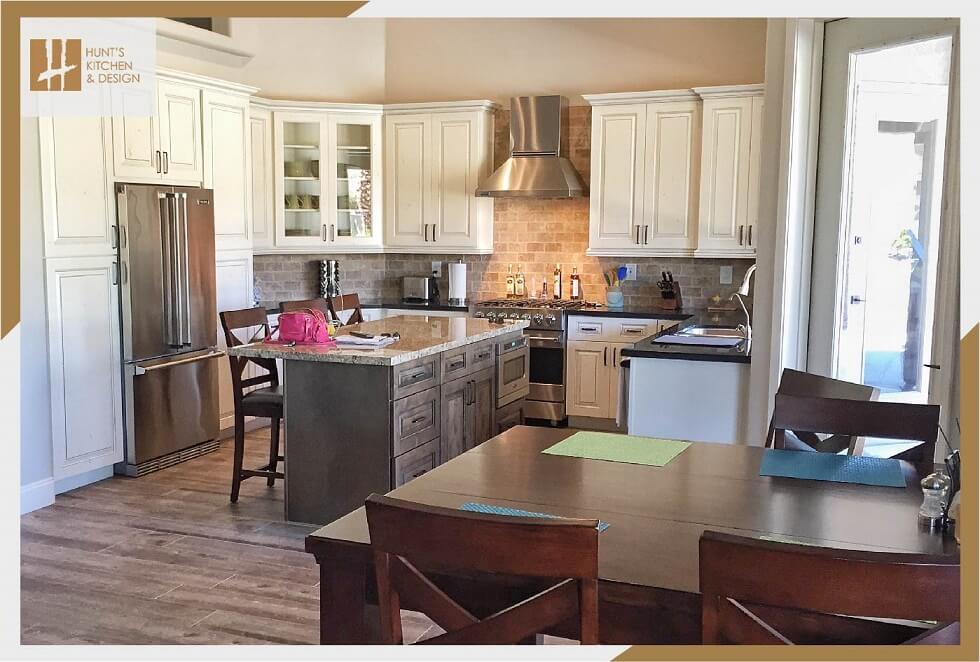
Angles and shapes
The configuration is always going to depend on how your current kitchen is already designed. You can have an L-shaped design or wall-to-wall countertops. As long as you don’t feel cluttered within your working space, there is no rule for sticking to a set shape. Even the addition of an Island is perfect if you can create a flow of space between you and the rest of your kitchen.
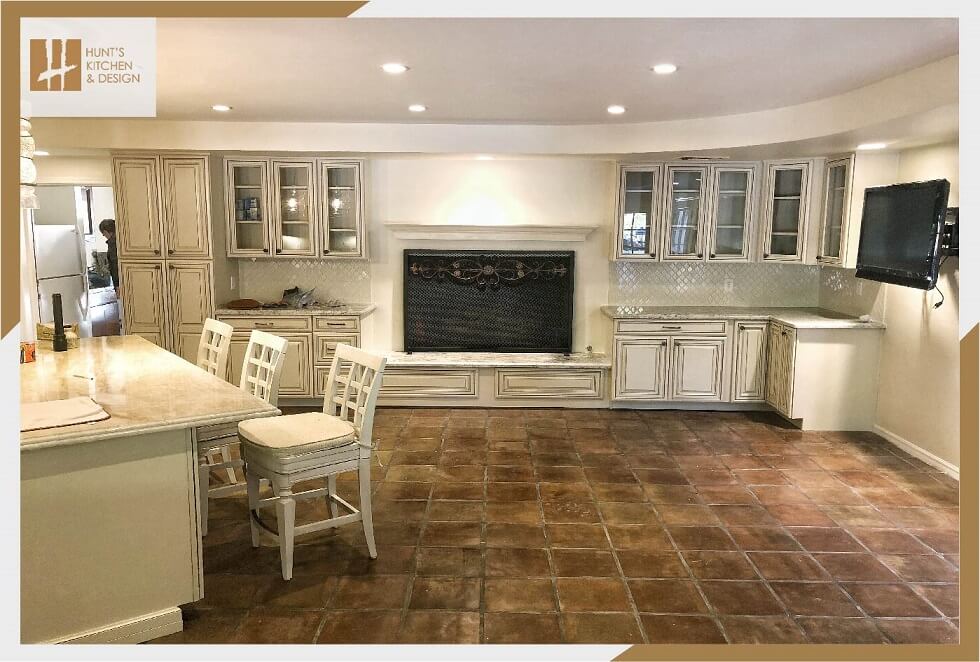
What colors work best?
Richly colored wood grain is always been a favorite, but more recently, higher saturation of wood stains is very popular. You want to stay away from high gloss, so a satin finish is perfect for bringing out the natural look of the surfaces you present. Anything else that is shiny including metal shouldn’t be mirrored. All surfaces need to appear worn but not overly shiny. The best colors always include natural wood grain mixed with earthy tones.
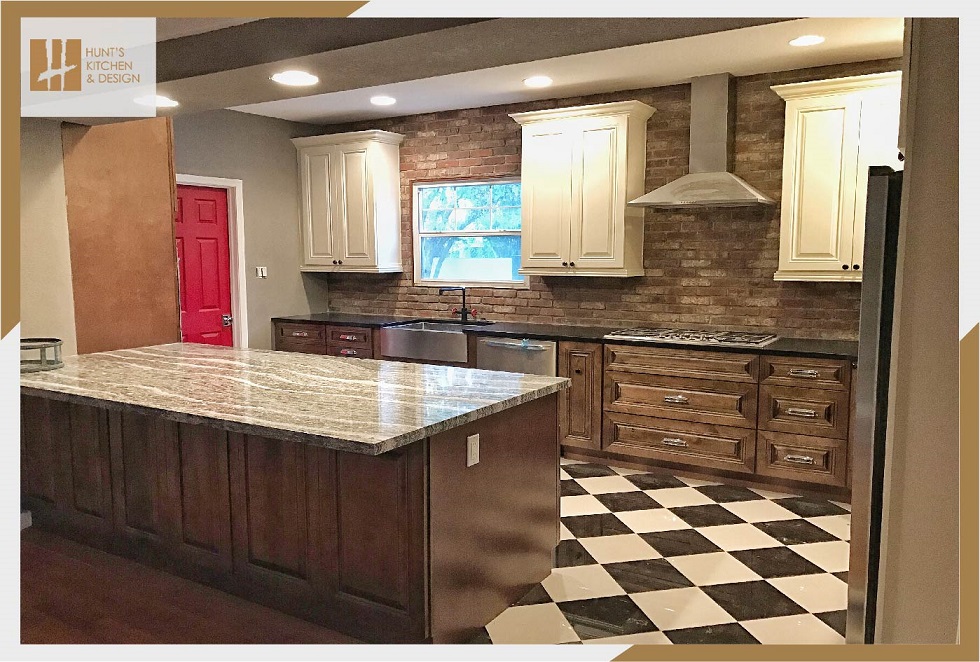
Countertops
Aside from shiny items in your kitchen, countertops can be as polished looking as you like. This brings the element of cleanliness and the upper-class charm of old-fashioned style. All countertops also should include a very simple backsplash that will compliment your countertop materials. Tile, brick, and mosaic patterns will help separate these two elements so they’re both standing out without drawing too much attention.
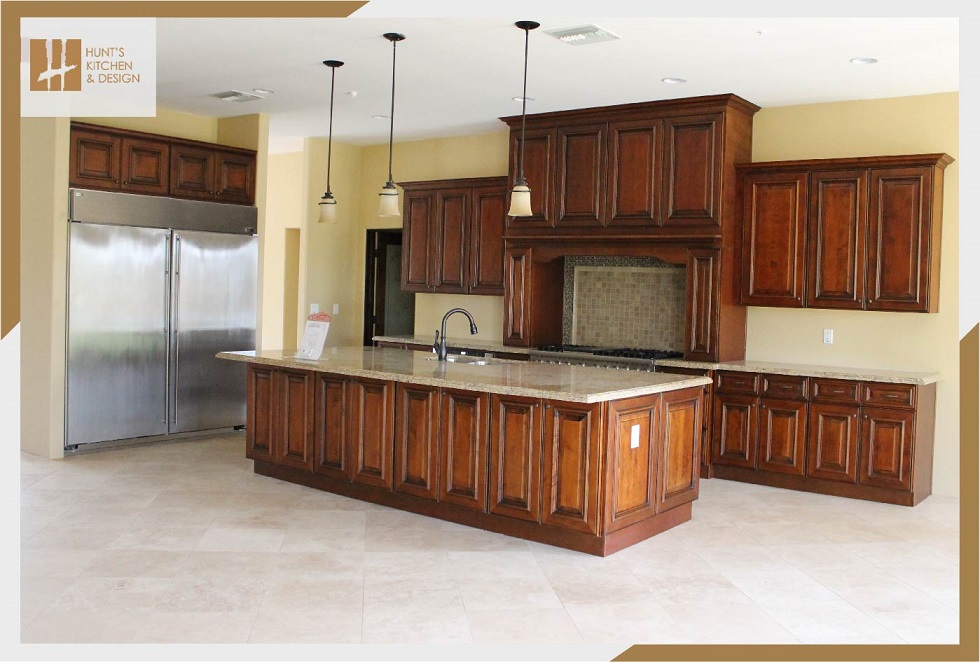
Appliances
There is nothing wrong with modern-looking appliances, so they just need to be toned down enough to fit in without looking like the kitchen of the future. You’ll be better off with retro appliances that give a flashback to the old days. Stainless steel needs to be semi-gloss so you keep a continual flow of non-reflective metal surfaces throughout your kitchen. Think of soft glowing surfaces rather than shiny mirror-like finishes.
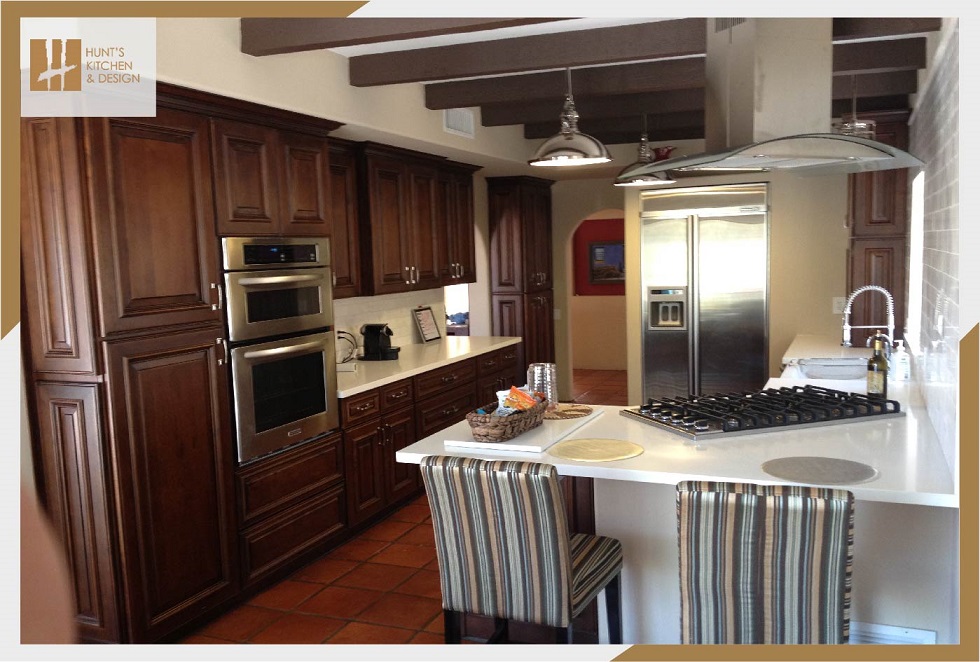
Types of cabinets
Framed cabinets that have decorative edges are always a big plus. These cabinets are meant to stand out so avoid anything inset. The point is to be seen rather than blending into the wall itself. You want people to notice all the lovely detail right away. Even when you go with light or pale colors, your cabinets need to stand out as a decorative touch. Hanging cabinets need to sit further back than your countertop cabinets. This makes your kitchen appear larger in return.
The hardware and fine detail
Once again, you need to stick to fancy unpolished metal handles or knobs. Hinges on the other hand need to be hidden so they’re placed inside the cabinet itself. You’re not going for a colonial or country kitchen here, so you want to keep the elegant appearance without looking primitive. Decorative moldings, corbels, and a select furniture-like atmosphere are what should come through right from the start.
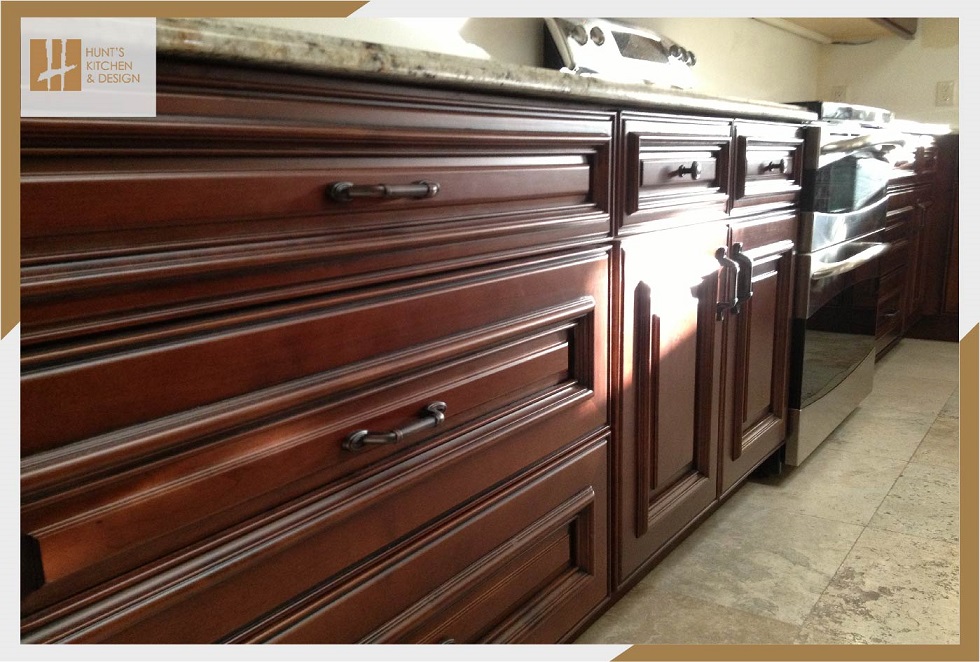
Flooring
Another must is wooden flooring that is just as decorative as your cabinets. These should not match in color. Choose a floor that had plenty of traction and is easy to clean. If you do decide to go with a polished floor, this is fine, but for the most part, flooring should always be 3-4 shades lighter or darker than your cabinet’s colors. Also keep in mind that your kitchen will be a high traffic area, to prevent slips or accidents.
Best Styles To Stick To
We recommend that these tips are what make a traditional kitchen fresh and lively for 2021 and the years to come. You don’t always have to stick to these ideas, yet most of these suggestions are perfectly suited for traditional kitchens. Here is what you’ll want to add for the smaller details through and through.
Handcrafted wooden cabinets
Choose a style that looks to be handcrafted as possible. Don’t settle for cabinets that appear to be off-the-shelf IKEA kitchen concepts. You want to show that these cabinets could have been made by a professional carpenter. The inner and outer framing for your cabinets should have plenty of lines and detail that frame each piece perfectly. Rounded or beveled edges aside, just think of your kitchen cabinets as if they were all old-fashioned picture frames.
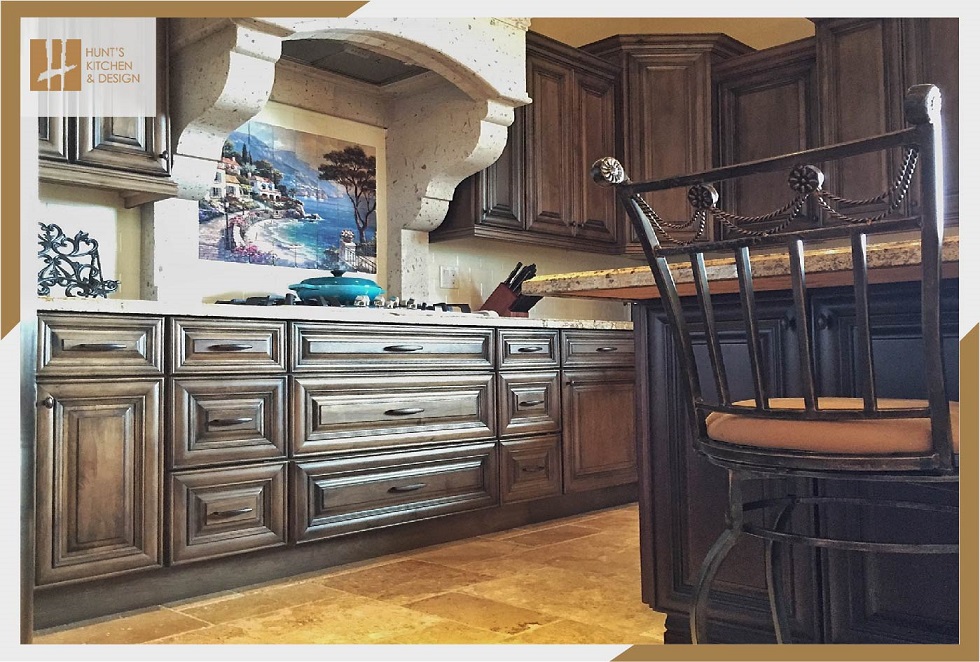
Highly-detailed wooden moldings and crowns
Don’t skimp on the level of detail and beauty that corbels can give to any kitchen. They’re meant to hold up weight and that’s the image your want to express, that your kitchen is made from quality materials setting a standard for old-world charm. The tops of cabinets will also look more elegant with decorative moldings and crowned edges. This gives them the appearance they are crafted in the same way that living room furniture is made.
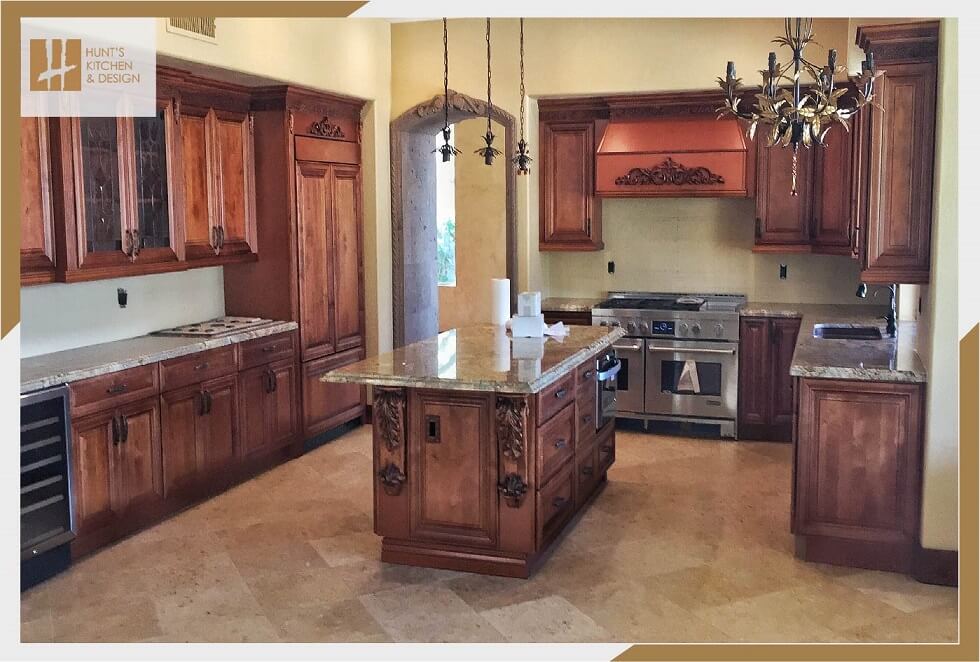
Combine your lighting styles
At least one hanging lamp in your kitchen is a showpiece that gives the elegant touch needed to be traditional-looking. Recessed lighting is also a big plus since this light doesn’t stand out to be annoying and gives you adequate lighting to work with. Adding lights under hanging cabinets is also a great touch as long as this lighting is warm and friendly. In fact, keep all the lights in your kitchen a soft warm glow.
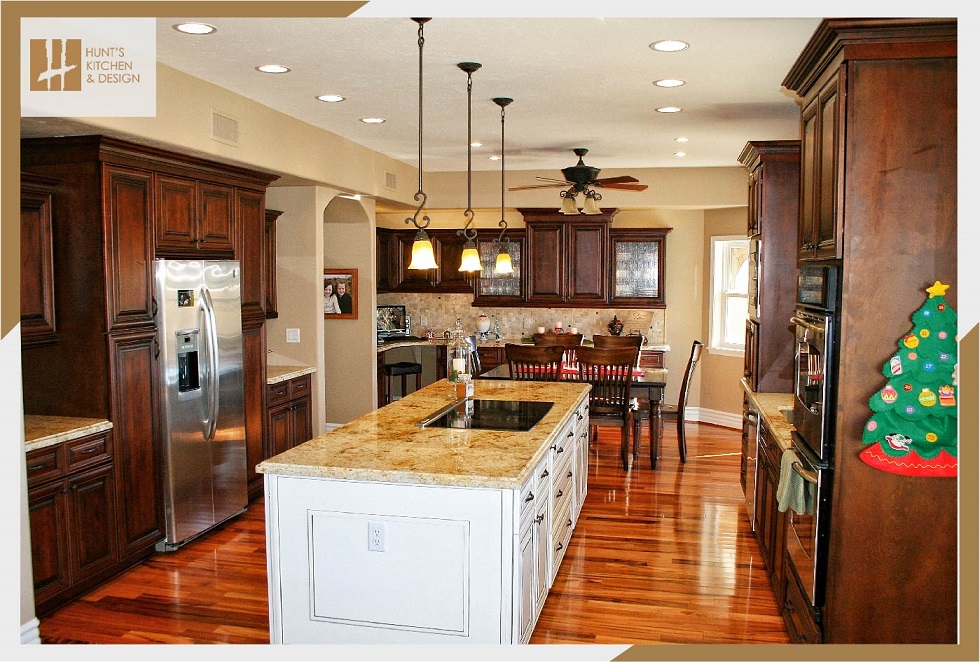
Make use of decorative kitchen windows and shelves
The idea of a traditional kitchen is to include plenty of counter space for all of your favorite decorative items. Flower vases, utensil holders, and fruit bowls will look great throughout the various nooks and open shelf space that’s created. These areas are also perfect for the typical appliances you use the most such as toaster ovens, coffee machines, and other assorted kitchen gadgets.
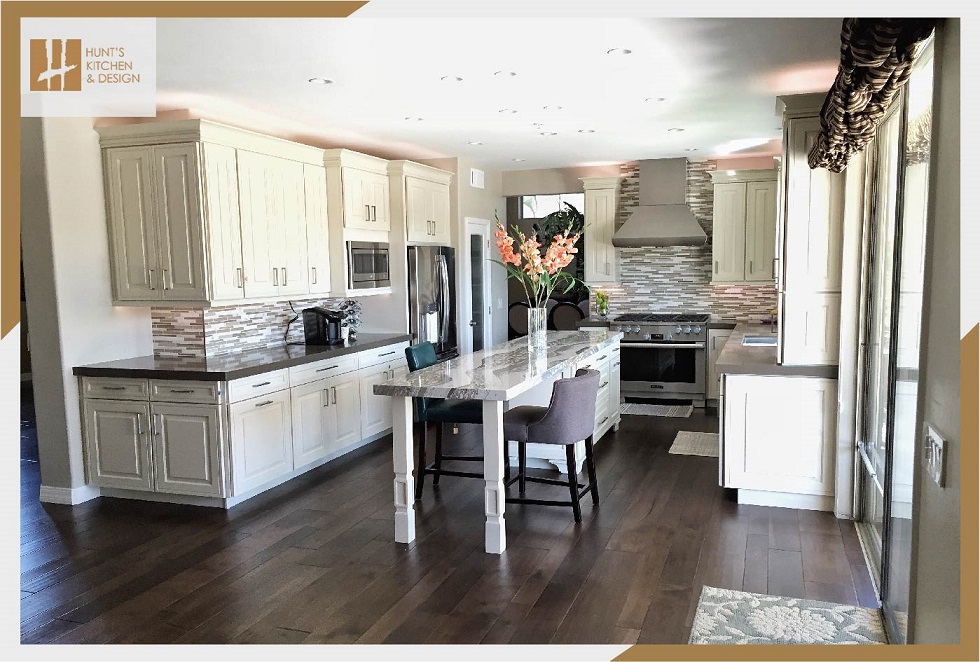
Do Kitchen Islands Make A Difference?
Having a kitchen island inside a traditional kitchen isn’t a bad idea at all. These are now becoming the standard in many kitchen styles, so building this into your kitchen won’t hurt a single bit. Unlike transitional or contemporary kitchen designs, you aren’t going for the open counter with seats lined along the edge. This island is strictly meant for one, two or three chairs that will double as a relaxing breakfast nook.
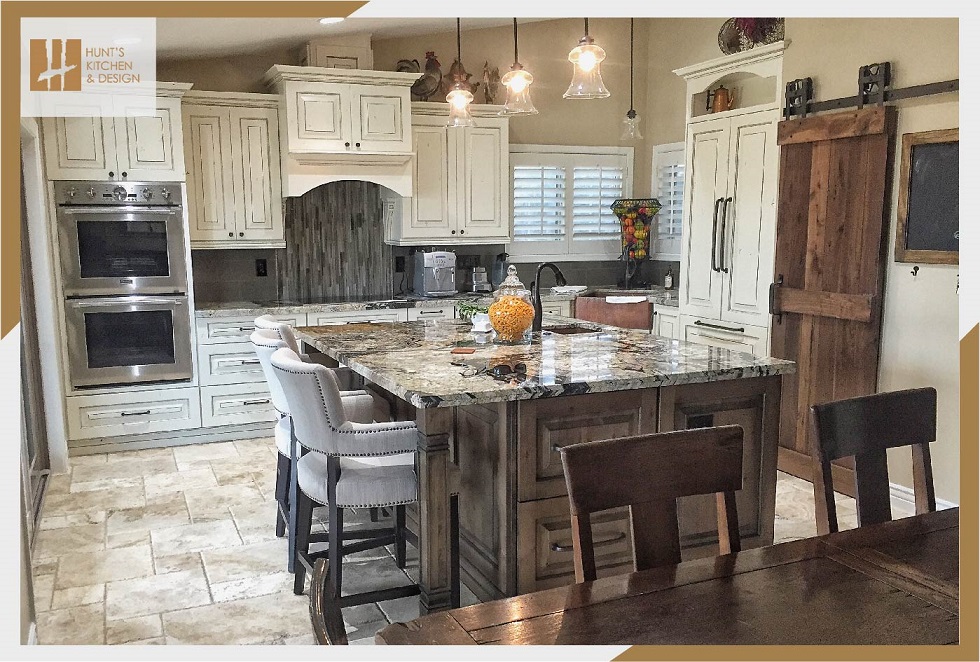
How Much Do You Want To Customize?
Obviously, there is more decorative effort that goes into traditional kitchens like this. It must be a matter of how much style you want to build into your kitchen. It should reflect your values of beauty and awareness of detail. In essence, it will be one room in your home that shows your love for the finer things that kitchen style can achieve. With just the right amount of detail, even smaller remodeling budgets can achieve impressive results.
Mixing the old with the new
This is where you can still have the benefit of choosing kitchen appliances that are just as modern as they come these days. Pickling just the right style will depend on the available models, so try to stick to classic designs that could appear to be much older looking than they really are. You can never go wrong with retro styles that provide all the modern convenience you need in your kitchen.
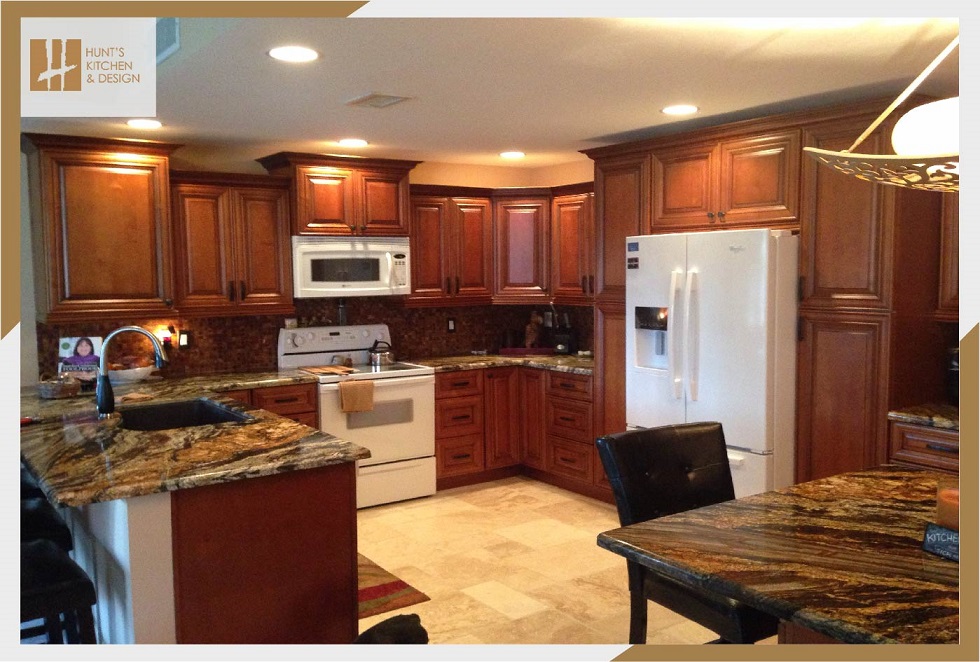
Get creative with subtle accents
Decorative detail always works when you have plenty to spread around. This can come from the furniture design all the way down to little trinkets that are antique-looking. Look to the past by collecting picture ideas of decorative furniture for inspiration. Try to liven up areas that might otherwise look bland. Every section in your kitchen needs to have one spot that is a stand-alone set piece.
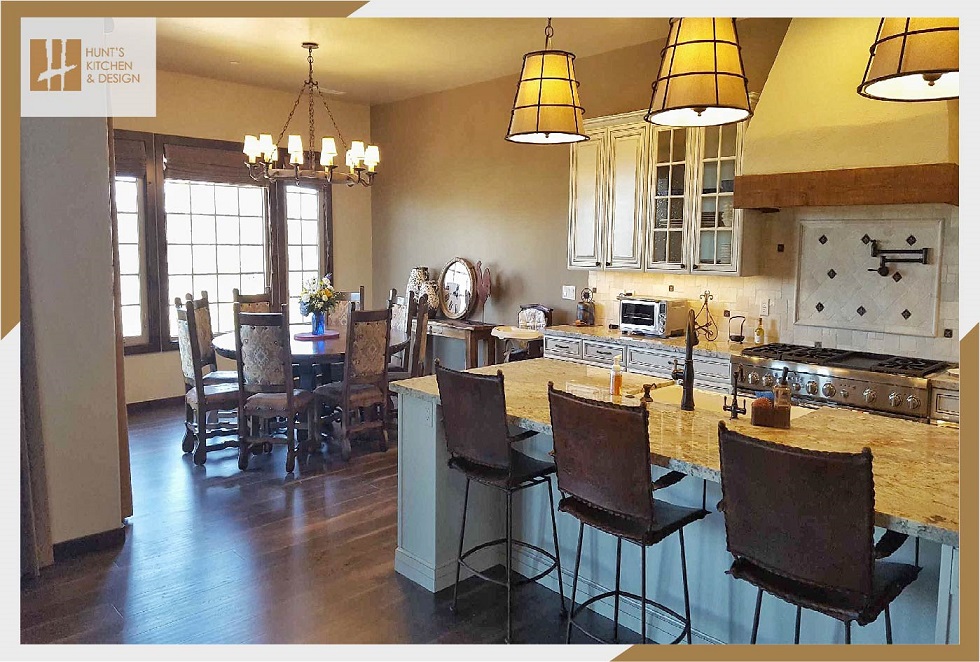
Be careful with your colors
Rich wood grains cover a lot of variety but stay away from vibrant colors that take away from the beauty that natural wood can provide. Additionally, consistency is important in traditional design. There isn’t anything wrong with soft white or slate-colored cabinets that bring around earthy tones. Rich mahogany stains also fit nicely. As long as you stick to true wood colors, a traditional kitchen can remain just as classy.
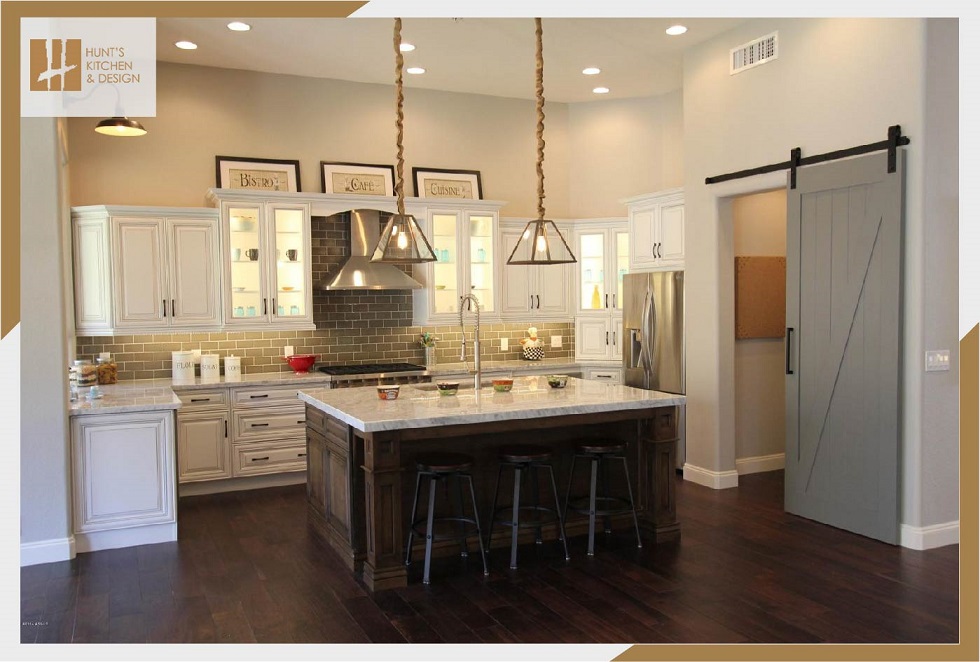
Take advantage of the space you have
Stick to roomy designs that give you the freedom to move around. Understandably, space can be a limiting factor, so create a design that provides rooms to move around. The best example of a traditional kitchen is lots of room to do your daily kitchen tasks. If you have to sacrifice or rearrange appliances to make your kitchen appear larger, this is the best step forward.
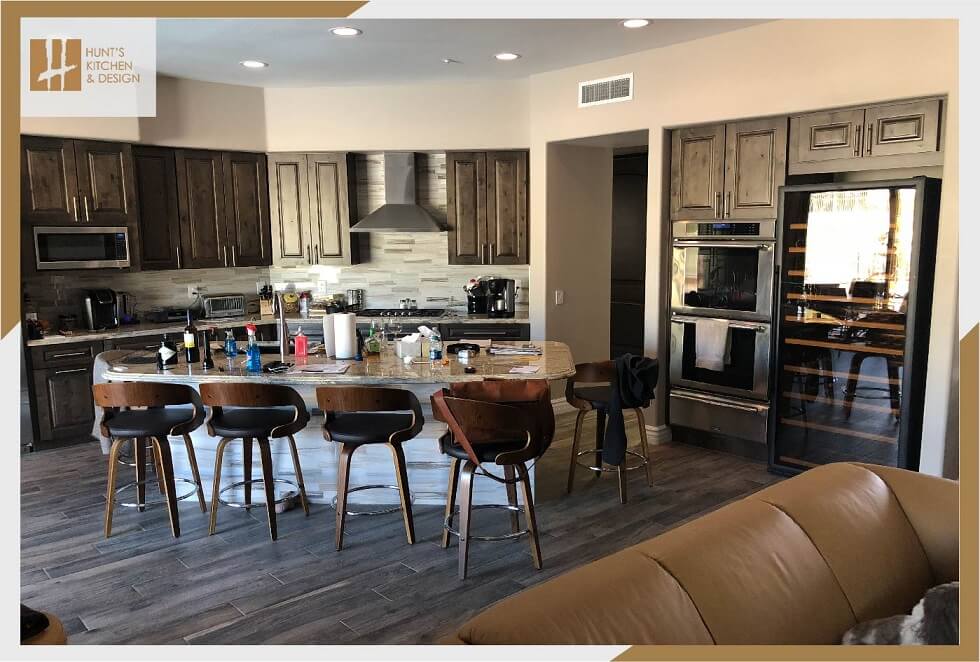
Is A Traditional Kitchen Makeover Right For Me?
If you like a kitchen that gives you the instant feeling of luxury and beauty, this style is perfect for you. If you are interested in kitchen or bathroom redesigning in Scottsdale, AZ, get in touch with us. The only thing that’s missing is your input on what the final design will include. If you like lots of detail, the advantage is well worth the effort it takes to achieve this amazing look. The best part of traditional kitchens comes from the compliments you’ll get for the intricate appearance that frames your home with plenty of character.
FAQs
What is a traditional kitchen decor style?
Last updated on March 15th, 2024 at 02:43 pm
Traditional kitchen decor style is a timeless look that incorporates classic elements such as clean looking cabinetry, various stone counter tops and most often tiled floors all done in lighter colors or dark wooded decor. It is often inspired by European and American design from the 18th and 19th centuries and is highly function while not being gaudy or highly ornate.
What colors are common in traditional kitchen decor style?
Last updated on March 15th, 2024 at 02:43 pm
Most traditional kitchens are either very light, or very dark depending on whose kitchen it is. Most people go for a lighter palette of white, beige and lighter browns giving their kitchens a light and airy feel and giving the illusion of a larger space.
Then there are the darker kitchens with darkly stained cabinetry and dark wood or tiled floors. These types of kitchen were popular in the early 1900s and some people still use them as insperatin for their kitchens even now.
What materials are commonly used in traditional kitchen decor style?
Last updated on March 15th, 2024 at 02:43 pm
Materials commonly used in traditional kitchen decor include wood, marble, and tile. Wood is often used for cabinetry and flooring and can be stained in a multitude of various colors, while marble and tile are popular for countertops and backsplashes most often in lighter colors.
How can I add traditional elements to my kitchen?
Last updated on March 15th, 2024 at 02:43 pm
To add traditional elements to your kitchen, consider incorporating timeless design elements such as raised panel doors, decorative accents and details such as wood grains that can be seen either in the floors or cabinets themselves, and a light colored backsplash like white subway tiles. Glass paneled cabinetry is also a traditional element and look great in any home.
What type of lighting is suitable for a traditional kitchen decor style?
Last updated on March 15th, 2024 at 02:43 pm
Suitable lighting for a traditional decor includes chandeliers, pendant lights, and wall sconces. Have them include glass shades of clear or milk glass for extra uniqueness. Also, choose lighting fixtures with elegant, formal designs, and consider using dimmer switches to create a warm, inviting ambiance.
What type of flooring works well in a traditional kitchen decor style?
Last updated on March 15th, 2024 at 02:43 pm
The most common types of flooring in a traditional kitchen are either tile or wood, both the faux wood tiles that you can see in many new homes or to be even more tradition, natural wood stained and treated. Tiling in a traditional pattern can also give some pop to an otherwise drab looking space. Also, consider using area rugs where appropriate for added warmth and texture.

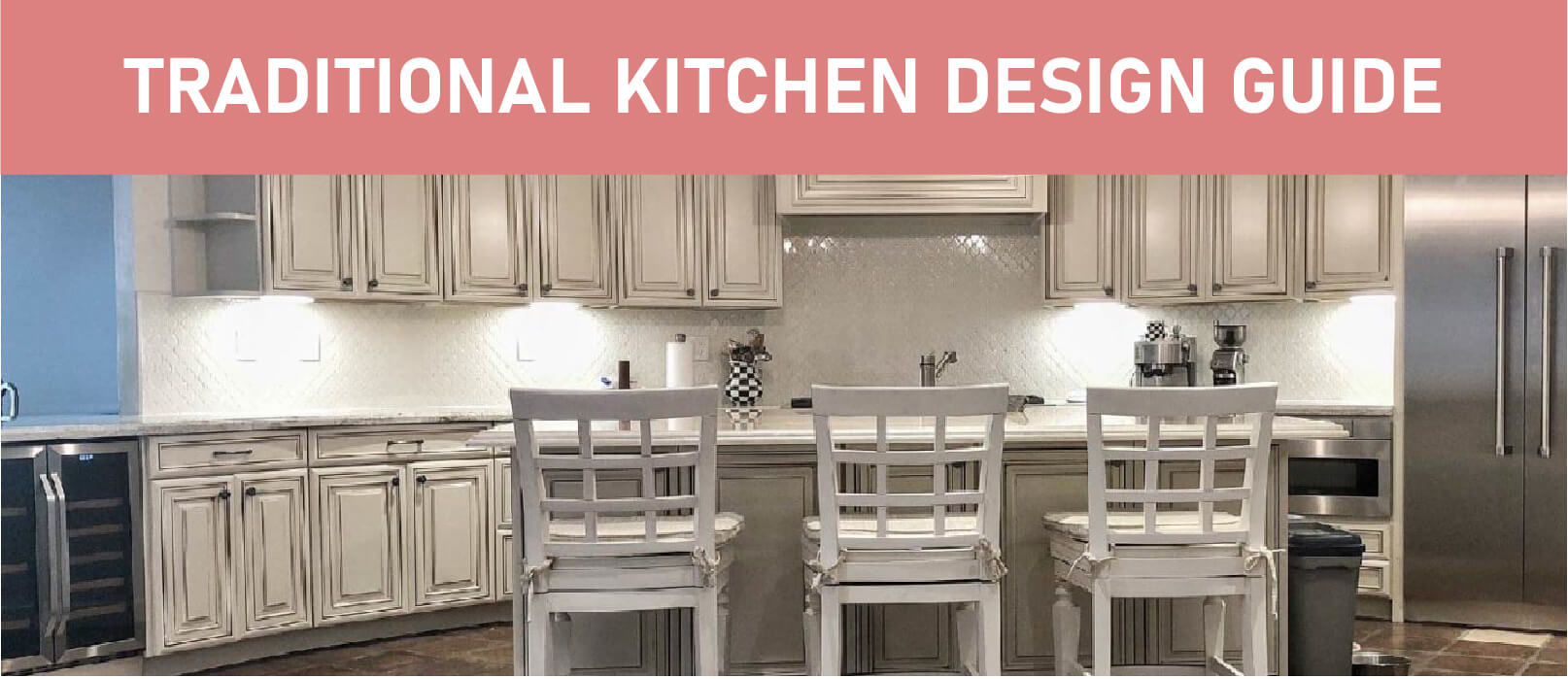
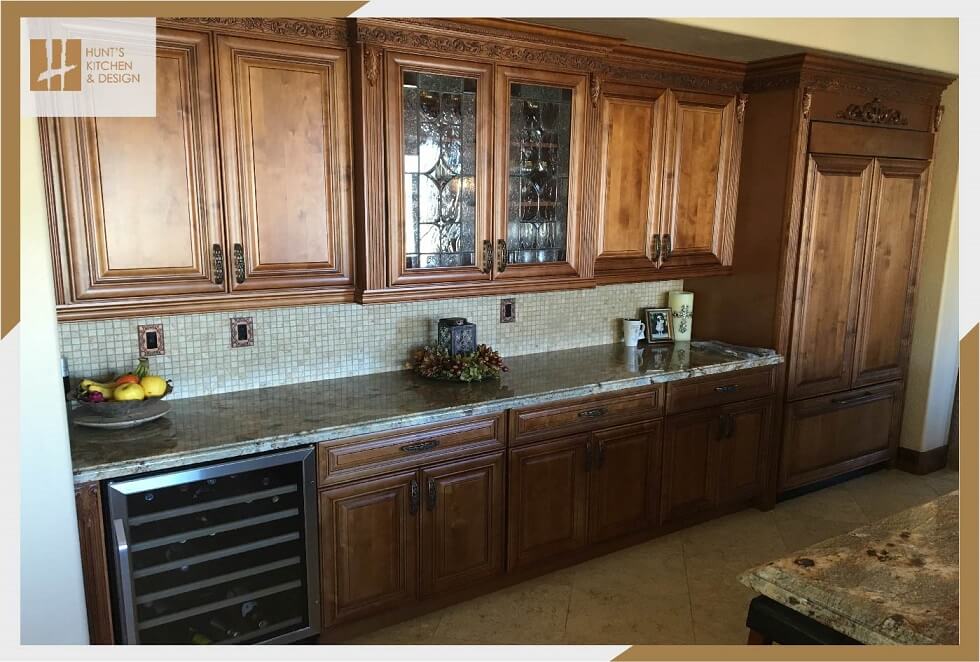


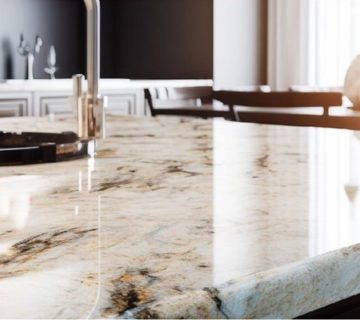

No comment